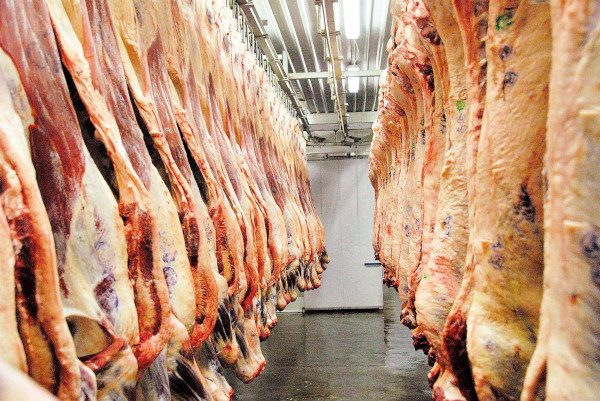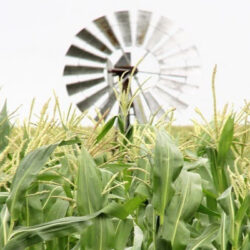More training among farmers and better systems in the larger red meat value chain are necessary to tackle the listeriosis threat, say researchers from the University of Pretoria.
Shortly after Saudi Arabia and China lifted their bans on South African red meat exports, experts associated with the University of Pretoria (UP) published the findings of a study on listeria in cattle and beef products in three provinces.
In mid-August, Saudi Arabia said it had lifted a ban on the import of South African red meat after 21 years, and China also gave the green light.
The study was funded by Red Meat Research and Development South Africa after the 2017-18 listeriosis outbreak in which 1 060 cases were reported and 216 people died. Processed products, such as polonies, were suspected to be one of the main sources of the outbreak.
“With this study, we attempted to investigate the prevalence and molecular characterisation of the pathogenic serotypes (a distinguishable strain of a micro-organism) of Listeria monocytogenes in cattle and beef products in Gauteng, Mpumalanga and North West,” says Abiodun Adesiyun, extraordinary professor in the Department of Production Animal Studies, according to a statement.
Adesiyun conducted the study in 2019 and 2020 with Dr Rebone Moerane, head of the department, Dr Nomakorinte Gcebe of the Agricultural Research Council’s Onderstepoort Veterinary Research Campus, and four postgraduate students.
The study
The study aimed to determine the prevalence and factors associated with the pathogen in cattle, silage, feeds and water on farms in the three provinces.
It also looked at sexes of cattle and carcasses at processing plants, and the prevalence and factors associated with the contamination of beef and beef products at retail points of sale.
Research was conducted at the three levels of beef production. Samples of faeces, feeds, silage and water were collected from cattle farms. Carcass samples were taken from abattoirs. And raw beef and beef products (including ready-to-eat products) were collected from retail stores of all sizes.
The sample
Moerane says samples of fresh faeces, pooled faeces, feeds and drinking water were taken from 56 farms:
North West. A total of 204 samples (combined: 80 and cow-calf: 124) were collected on 20 farms.
Mpumalanga. A total of 475 samples were collected on 25 farms, including feedlots, cow-calf enterprises and communal farms.
Gauteng. A total of 328 samples were collected on 11 farms, including feedlots, cow-calf enterprises and communal farms.
A total of 1 200 samples of beef and beef products were obtained from 108 retailers:
North West. A total of 400 samples were obtained from 30 retailers.
Mpumalanga. A total of 400 samples were obtained from 30 retailers.
Gauteng. A total of 400 samples were obtained from 48 retailers.
Samples from abattoirs were taken only in Gauteng, and Moerane says it should be noted that listeria prevalence is more concerning at the retail level. Some abattoirs also have retail outlets.
Findings
One of the findings of the study is that 4.6% of the chilled carcasses from which samples were taken at seven abattoirs in Gauteng were contaminated with Listeria monocytogenes.
“This means that contaminated carcasses have the potential to enter the food chain as beef and beef products sold by retailers in this province,” says Moerane.
Listeria monocytogenes can cause listeriosis, which can be life-threatening. Most cases in humans are associated with consumption of ready-to-eat products. The pathogen can survive and multiply at refrigerator temperatures.
“Processed food becomes contaminated through contact with equipment, handling of raw products, or post-processing conditions in which the pathogen can survive despite the regular use of disinfectants,” says Moerane.
“Some serotypes of Listeria monocytogenes identified by the team belong to serogroups known for their potential to cause human listeriosis. In addition, for the virulence genes selectively tested, the detection frequency ranged from 12.5% to 50%, 21.9% to 100% and 81.8% to 100% in North West, Mpumalanga and Gauteng, respectively.
“The prevalence of the pathogen was 6%, 8.3% and 9.3% in samples of beef and beef products taken at points of sale in North West, Mpumalanga and Gauteng, respectively, and in 4.3%, 11% and 9.3% of samples for cold beef and beef products.
“Of the contaminated products, ready-to-eat items were included – including polony (6.9% to 16.7%), which is widely consumed, and biltong (3.6% to 10.3%). This increases the risk of human exposure to the pathogen.”
Moerane told Landbou.com that the findings suggest a minimal risk of cattle being exposed to Listeria monocytogenes on farms.
“But we need to improve training and knowledge among farmers about the appropriate use of antimicrobial agents to prevent the spread of resistant strains,” he says.
“The problem and significant risk are within abattoirs and retail outlets. We need to improve systems within the value chain, and this includes proper hygiene, cleaning, and the application of hazard analysis critical control points (known as HACCP control measures) within businesses.”
Exports
Moerane believes that if measures are not implemented, the prevalence of Listeria monocytogenes could have an impact on red meat exports.
“While we have identified risks, the research outcomes have empowered the leadership of the red meat industry to engage with various stakeholders on the importance of food safety and its monitoring,” he says.




